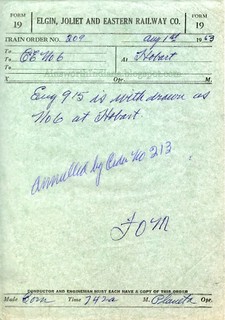
(Click on images to enlarge)
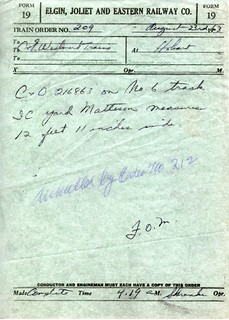
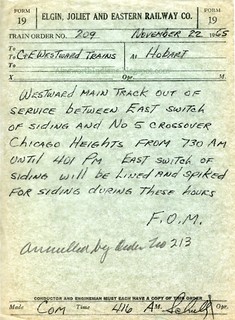
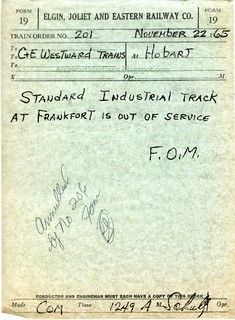
These two were stapled together:
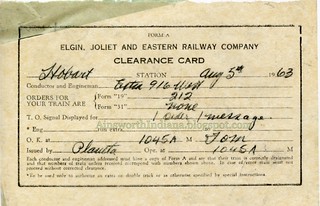
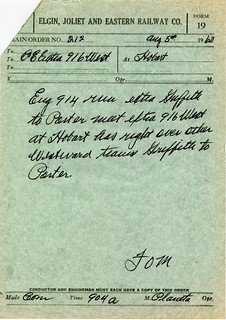
As were these:

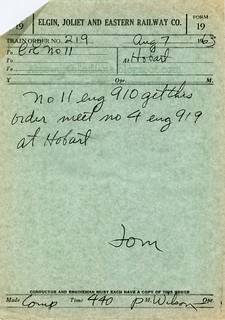
And these:
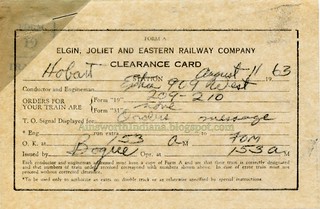
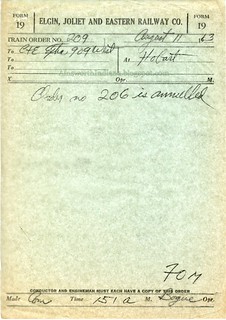
Not knowing the first thing about train orders, I asked local historian-photographer-railfan Daniel Kleine to give me a crash course — so here is Dan's "Train Orders for Dummies," with illustrations.
From 1850's to 1980's many railroads operated by timetables and train orders. Most people are familiar with paper passenger train timetables but there are more complete and complicated timetables listing passenger and freight trains, and other operating details and rules. These are carried by RR employees only; every scheduled train has an identifying number. A central dispatcher would orchestrate train movements for the day and issue train orders (aka track warrant or clearance) Train orders were used to communicate exceptions to the timetable, or special conditions. Trains were often eliminated (withdrawn), added (extra), or priorities or speed limits were changed. For example the Lincoln Funeral Train would have been an "extra" and train orders would have been issued to cover its movement, giving it priority (right of way). Train orders facilitated smooth train movements, safety, and superseded the timetable. They are written in a sort of railroad shorthand, which makes sense to RR people, but may be hard for others to understand. Each RR was an independent entity so each had its own procedures. These were the days before radio communication. Trains operated in different directions, at varying speeds, on a single track so they would have to "meet" at passing sidings/spurs. For example, a train would have to wait for an opposing train to pass at a siding, based on the timetable, operating rules, and/or train orders to prevent a head-on collision.
Towers and stations were usually connected via telegraph or telephone (the railroads had their own private system). Most people think that the wires that ran beside RR tracks were for electricity; actually they were for communication and in some cases low-voltage electricity for signals powered by large banks of batteries. Paper train orders were passed to the engineer and/or conductor at towers and stations, either by the train stopping, or via hoops/tossing while the train was moving slowly. The attached photo of the Merrillville station shows a train order semaphore; it is set to tell an eastbound train to stop.
(Click on image to enlarge)
Image courtesy of Daniel Kleine.
Most stations, towers and telegraph poles are gone now. Some small railroads with limited capital still use the train order system; a variation was used by the South Shore up until 2011 when they installed new signals and central control. Some large model railroads use a train order system to play realistically. The Pennsylvania railroad and the EJ&E had an interchange track in Hobart; i.e. they could swap cars. A photo of the tower in the 80's is attached.
(Click on image to enlarge)
Image courtesy of Daniel Kleine.
Dan directed me to the website of the Chesapeake and Ohio Historical Society and some instructive photos in its archives:
- This one shows a station employee with a folded train order in a long-handled device that will allow a member of the train crew to snatch the order as the train passes (Dan points out that in the background "the train order semaphore is set to 'slow' for the approaching train").
- Here an engineer is plucking an order from the station operator.
- This photo shows a similar device set into a train order crane.
- Here we see a brakeman reaching out to grab an order.

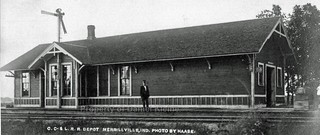


No comments:
Post a Comment